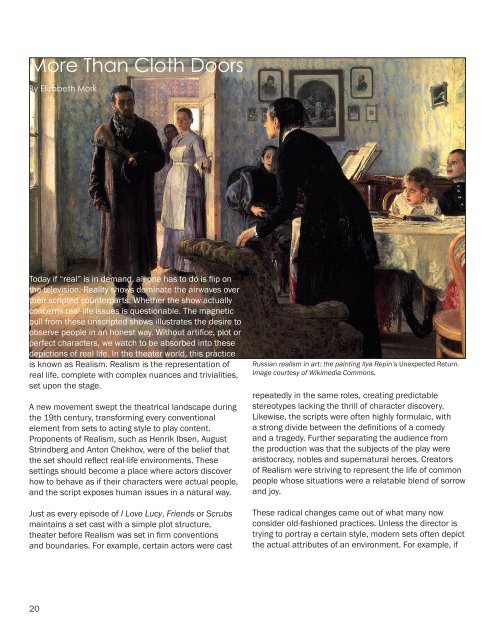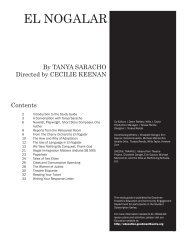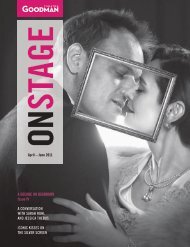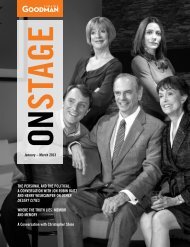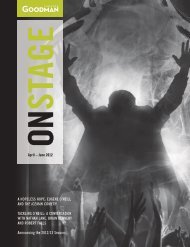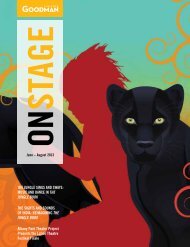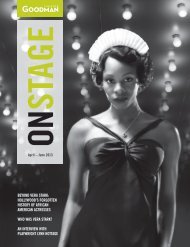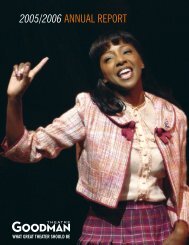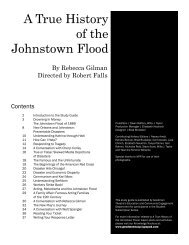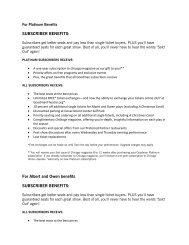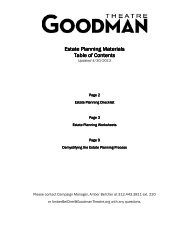The Seagull Study Guide (12MB) - Goodman Theatre
The Seagull Study Guide (12MB) - Goodman Theatre
The Seagull Study Guide (12MB) - Goodman Theatre
You also want an ePaper? Increase the reach of your titles
YUMPU automatically turns print PDFs into web optimized ePapers that Google loves.
More Than Cloth Doors<br />
By Elizabeth Mork<br />
Today if “real” is in demand, all one has to do is flip on<br />
the television. Reality shows dominate the airwaves over<br />
their scripted counterparts. Whether the show actually<br />
concerns real-life issues is questionable. <strong>The</strong> magnetic<br />
pull from these unscripted shows illustrates the desire to<br />
observe people in an honest way. Without artifice, plot or<br />
perfect characters, we watch to be absorbed into these<br />
depictions of real life. In the theater world, this practice<br />
is known as Realism. Realism is the representation of<br />
real life, complete with complex nuances and trivialities,<br />
set upon the stage.<br />
A new movement swept the theatrical landscape during<br />
the 19th century, transforming every conventional<br />
element from sets to acting style to play content.<br />
Proponents of Realism, such as Henrik Ibsen, August<br />
Strindberg and Anton Chekhov, were of the belief that<br />
the set should reflect real-life environments. <strong>The</strong>se<br />
settings should become a place where actors discover<br />
how to behave as if their characters were actual people,<br />
and the script exposes human issues in a natural way.<br />
Just as every episode of I Love Lucy, Friends or Scrubs<br />
maintains a set cast with a simple plot structure,<br />
theater before Realism was set in firm conventions<br />
and boundaries. For example, certain actors were cast<br />
Russian realism in art: the painting Ilya Repin’s Unexpected Return.<br />
Image courtesy of Wikimedia Commons.<br />
repeatedly in the same roles, creating predictable<br />
stereotypes lacking the thrill of character discovery.<br />
Likewise, the scripts were often highly formulaic, with<br />
a strong divide between the definitions of a comedy<br />
and a tragedy. Further separating the audience from<br />
the production was that the subjects of the play were<br />
aristocracy, nobles and supernatural heroes. Creators<br />
of Realism were striving to represent the life of common<br />
people whose situations were a relatable blend of sorrow<br />
and joy.<br />
<strong>The</strong>se radical changes came out of what many now<br />
consider old-fashioned practices. Unless the director is<br />
trying to portray a certain style, modern sets often depict<br />
the actual attributes of an environment. For example, if<br />
20


